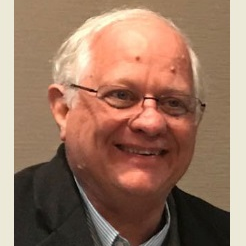Progress in Powder-Based Additive Manufacturing
A special issue of Journal of Manufacturing and Materials Processing (ISSN 2504-4494).
Deadline for manuscript submissions: closed (31 March 2023) | Viewed by 26488
Special Issue Editors
Interests: polymer processes; polymer AM
Interests: photonics; laser applications
Special Issue Information
Dear Colleagues,
Additive manufacturing (AM) is widely acknowledged to be a revolutionary manufacturing technology. Regarding powder-based AM, beam-based technologies have attracted the most research and industrial attention, and have grown significantly during the last decade. Due to its high potential for forming almost unrestrictedly complex shapes, powder-based AM allows the production of individualized products and fully functional parts for various engineering problems.
To exploit the full potential of AM processes, current research focuses on process-adapted materials to achieve defined part characteristics in processing and process development for reproducible component performance in terms of locally and globally defined part properties. Further, simulation methods to create a virtual lab for predictive part behavior are needed for the additional development of the process, leading to a highly interdisciplinary field of research.
This Special Issue, “Progress in Powder-Based Additive Manufacturing”, will focus on advances in powder manufacturing, material design, process development, and simulation techniques for powder bed fusion. Of particular significance are original papers dealing with metal and polymer powders as well a laser or electron-beam powder bed fusion. Topics of interest include (but are not strictly limited to) the following:
• Powder manufacturing for AM;
• Characterization of powder properties under process conditions;
• New materials for additive manufacturing;
• Polymers and metals;
• Effect of powder properties on the properties of AM components;
• Fundamental investigations on the powder–process–component relationship;
• Advanced additive manufacturing strategies;
• Modeling and simulation applied to powder bed fusion;
• Product design and topology optimization;
• Smart materials and multi-functional components.
Prof. Dr. Dietmar Drummer
Prof. Dr. Michael Schmidt
Prof. Dr. David Bourell
Guest Editors
Manuscript Submission Information
Manuscripts should be submitted online at www.mdpi.com by registering and logging in to this website. Once you are registered, click here to go to the submission form. Manuscripts can be submitted until the deadline. All submissions that pass pre-check are peer-reviewed. Accepted papers will be published continuously in the journal (as soon as accepted) and will be listed together on the special issue website. Research articles, review articles as well as short communications are invited. For planned papers, a title and short abstract (about 100 words) can be sent to the Editorial Office for announcement on this website.
Submitted manuscripts should not have been published previously, nor be under consideration for publication elsewhere (except conference proceedings papers). All manuscripts are thoroughly refereed through a single-blind peer-review process. A guide for authors and other relevant information for submission of manuscripts is available on the Instructions for Authors page. Journal of Manufacturing and Materials Processing is an international peer-reviewed open access semimonthly journal published by MDPI.
Please visit the Instructions for Authors page before submitting a manuscript. The Article Processing Charge (APC) for publication in this open access journal is 1800 CHF (Swiss Francs). Submitted papers should be well formatted and use good English. Authors may use MDPI's English editing service prior to publication or during author revisions.






